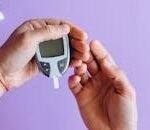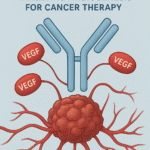Pharmacy Practice MCQ, in this article we will solve, Practice MCQ under subject physical pharmaceutics. Read following article for your reference.
States Of Matter And Changes In States Of Matter » PHARMACAREERS
- Which of the following is NOT a state of matter?
- A) Solid
- B) Liquid
- C) Gas
- D) Plasma
- What is the term for the energy required to change a substance from solid to liquid at its melting point?
- A) Latent heat of fusion
- B) Latent heat of vaporization
- C) Latent heat of sublimation
- D) Latent heat of condensation
- Which process involves a solid changing directly into a gas?
- A) Melting
- B) Vaporization
- C) Sublimation
- D) Condensation
- What is the significance of vapor pressure in drug formulations?
- A) It affects the stability and efficacy of the drug
- B) It determines the color of the drug
- C) It influences the taste of the drug
- D) It has no significance
- Which state of matter has a definite shape and volume?
- A) Solid
- B) Liquid
- C) Gas
- D) Plasma
- What is the critical point for sublimation?
- A) The temperature and pressure at which solid and gas phases coexist in equilibrium
- B) The temperature at which a liquid boils
- C) The pressure at which a gas condenses
- D) The point at which a solid melts
- In the context of physical pharmaceutics, why is understanding latent heat important?
- A) For the formulation of drugs that need to be melted and solidified
- B) For determining the color of the drug
- C) For enhancing the taste of the drug
- D) For packaging the drug
- Which of the following processes is used in the preparation of certain pharmaceutical powders?
- A) Melting
- B) Vaporization
- C) Sublimation
- D) Condensation
- What is the term for the pressure exerted by a vapor in equilibrium with its liquid or solid phase at a given temperature?
- A) Atmospheric pressure
- B) Vapor pressure
- C) Osmotic pressure
- D) Hydrostatic pressure
- Which process is significant in lyophilization (freeze-drying)?
- A) Melting
- B) Vaporization
- C) Sublimation
- D) Condensation
- What is the latent heat of vaporization?
- A) The energy required to change a substance from liquid to gas at its boiling point
- B) The energy required to change a substance from solid to liquid at its melting point
- C) The energy required to change a substance from gas to liquid
- D) The energy required to change a substance from solid to gas
- Which state of matter has particles that are tightly packed and only vibrate in place?
- A) Solid
- B) Liquid
- C) Gas
- D) Plasma
- What happens during the process of condensation?
- A) A gas changes into a liquid
- B) A liquid changes into a gas
- C) A solid changes into a gas
- D) A solid changes into a liquid
- Why is understanding vapor pressure important for inhalation products?
- A) It affects the delivery and performance of the inhalation product
- B) It determines the color of the inhalation product
- C) It influences the taste of the inhalation product
- D) It has no significance
- Which state of matter has a definite volume but takes the shape of its container?
- A) Solid
- B) Liquid
- C) Gas
- D) Plasma
- What is the latent heat of sublimation?
- A) The energy required to change a substance from solid to gas without passing through the liquid phase
- B) The energy required to change a substance from liquid to gas at its boiling point
- C) The energy required to change a substance from solid to liquid at its melting point
- D) The energy required to change a substance from gas to liquid
- Which process involves a liquid changing into a gas?
- A) Melting
- B) Vaporization
- C) Sublimation
- D) Condensation
- What is the significance of understanding the sublimation critical point in lyophilization?
- A) It helps in optimizing the freeze-drying process
- B) It determines the color of the drug
- C) It influences the taste of the drug
- D) It has no significance
- Which state of matter has particles that are far apart and move freely?
- A) Solid
- B) Liquid
- C) Gas
- D) Plasma
- What happens during the process of melting?
- A) A solid changes into a liquid
- B) A liquid changes into a gas
- C) A gas changes into a liquid
- D) A solid changes into a gas
- Why is understanding latent heat important in the formulation of suppositories?
- A) It helps in determining the melting and solidification points
- B) It determines the color of the suppository
- C) It influences the taste of the suppository
- D) It has no significance
- Which process is used to remove solvents from drug formulations without degrading the active pharmaceutical ingredient (API)?
- A) Melting
- B) Vaporization
- C) Sublimation
- D) Condensation
- What is the term for the energy required to change a substance from gas to liquid?
- A) Latent heat of fusion
- B) Latent heat of vaporization
- C) Latent heat of sublimation
- D) Latent heat of condensation
- Which state of matter has no definite shape or volume?
- A) Solid
- B) Liquid
- C) Gas
- D) Plasma
- What happens during the process of freezing?
- A) A liquid changes into a solid
- B) A solid changes into a liquid
- C) A gas changes into a liquid
- D) A liquid changes into a gas
- Why is understanding vapor pressure important in lyophilization?
- A) It helps in optimizing the freeze-drying process
- B) It determines the color of the drug
- C) It influences the taste of the drug
- D) It has no significance
- Which state of matter has particles that are less tightly packed than in solids, allowing them to flow?
- A) Solid
- B) Liquid
- C) Gas
- D) Plasma
- What is the significance of understanding the latent heat of vaporization in lyophilization?
- A) It helps in optimizing the freeze-drying process
- B) It determines the color of the drug
- C) It influences the taste of the drug
- D) It has no significance
- Which process involves a gas changing into a liquid?
- A) Melting
- B) Vaporization
- C) Sublimation
- D) Condensation
- What is the term for the energy required to change a substance from liquid to solid at its freezing point?
- A) Latent heat of fusion
- B) Latent heat of vaporization
- C) Latent heat of sublimation
- D) Latent heat of condensation
For more regular updates you can visit our social media accounts,
Instagram: Follow us
Facebook: Follow us
WhatsApp: Join us
Telegram: Join us





